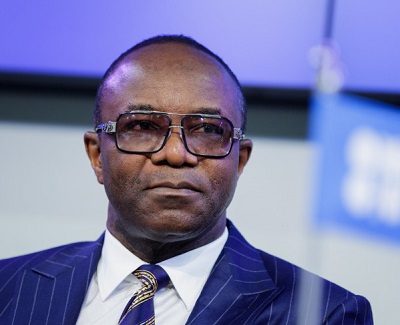Oil prices rise as dollar continues slide against the yen
 Oil prices surged Monday to build on last week’s rally as the dollar clawed back losses following concerns over gridlock in Washington and renewed tensions on the Korean peninsula.
Oil prices surged Monday to build on last week’s rally as the dollar clawed back losses following concerns over gridlock in Washington and renewed tensions on the Korean peninsula.
Both main crude contracts made strong gains, with WTI testing $50 a barrel for the first time since late May and Brent heading towards $53, while mining giants BHP Billiton and Rio Tinto saw their share price rise as commodities strengthened.
On equity markets, Tokyo closed lower as the yen hardened against the dollar earlier Monday while Shanghai edged up, shrugging off slightly lower than expected purchasing managers’ index (PMI) data, a gauge of factory conditions.
Hong Kong advanced sharply in afternoon trade to cap a strong month which has seen the Hang Seng set for its biggest gain since January.
Asia-focused banking giant HSBC was one of the index’s strongest movers after it announced forecast-beating profits.
Analysts said a host of factors was pushing investors’ newfound optimism in oil.
“Inventories are showing massive drawdowns, Saudi Arabia seems intent on playing its role as the world’s swing producer ahead of the Aramco IPO, impending sanctions on Venezuela by the US will almost certainly be oil price supportive with a weaker US dollar and conflict within Washington DC all lending a hand,” said Jeffrey Halley, senior market analyst at OANDA.
“There also appears to be less urgency by shale producers to hedge forward production for now which has snuffed out previous rallies.”
– Japanese economy ‘stronger’ –
The yen’s rise came as the dollar was earlier dragged down by increasing uncertainty in the US capital after another failed attempt at health care reform, while the currency also took a hit from US GDP data Friday which cast further doubt on any early interest rate increase from the Federal Reserve.
Renewed tensions following North Korea’s latest launch of an intercontinental ballistic missile has also aided the yen, considered a safe bet in times of turmoil.
Stephen Innes, who heads Asia-Pacific trading at forex firm OANDA, played down hopes of a sustained US dollar rebound.
“There remains real appetite to sell the USD … as it’s becoming evident to all the greenback has problems, and the can of worms is barely open.”
Meanwhile, Japan’s industrial output for June rose 1.6 percent from the previous month, ahead of forecasts of 1.5 percent and rebounding with global demand.
“Demand for information technology investment and a recovery in global capital investment are supporting production in Japan,” said Masaki Kuwahara, senior economist at Nomura Securities in Tokyo.
“The economy itself is stronger than I had expected.”
However, manufacturing data from the world’s second largest economy pointed to a modest slowdown.
The latest PMI came in at 51.4 in July, the National Bureau of Statistics (NBS) said, down from the 51.7 reading in June and shy of a forecast of 51.5 by analysts surveyed by Bloomberg News.
“July’s PMI signals a slight softening of the manufacturing sector,” Raymond Yeung of Australia & New Zealand Banking Group said.
In Europe, London opened higher, supported by solid share-price gains for the heavyweight mining sector
— Bloomberg News contributed to this report —
– Key figures around 0720 GMT –
Tokyo – Nikkei 225: DOWN 0.2 percent at 19,925.18 (close)
Hong Kong – Hang Seng: UP 1.2 percent at 27,296.45
Shanghai – Composite: UP 0.6 percent at 3,273.03 (close)
Euro/dollar: DOWN at 1.1734 from $1.1755
Pound/dollar: DOWN at 1.3111 from $1.3139
Dollar/yen: DOWN at 110.70 yen from 110.71 yen
Oil – West Texas Intermediate: UP 19 cents at $49.90 per barrel
Oil – Brent North Sea: UP 69 cents at $52.76
New York – Dow: UP 0.15 percent at 21,830.31 (close)
London – FTSE 100: UP 0.3 percent at 7,389.04 points
AFP







